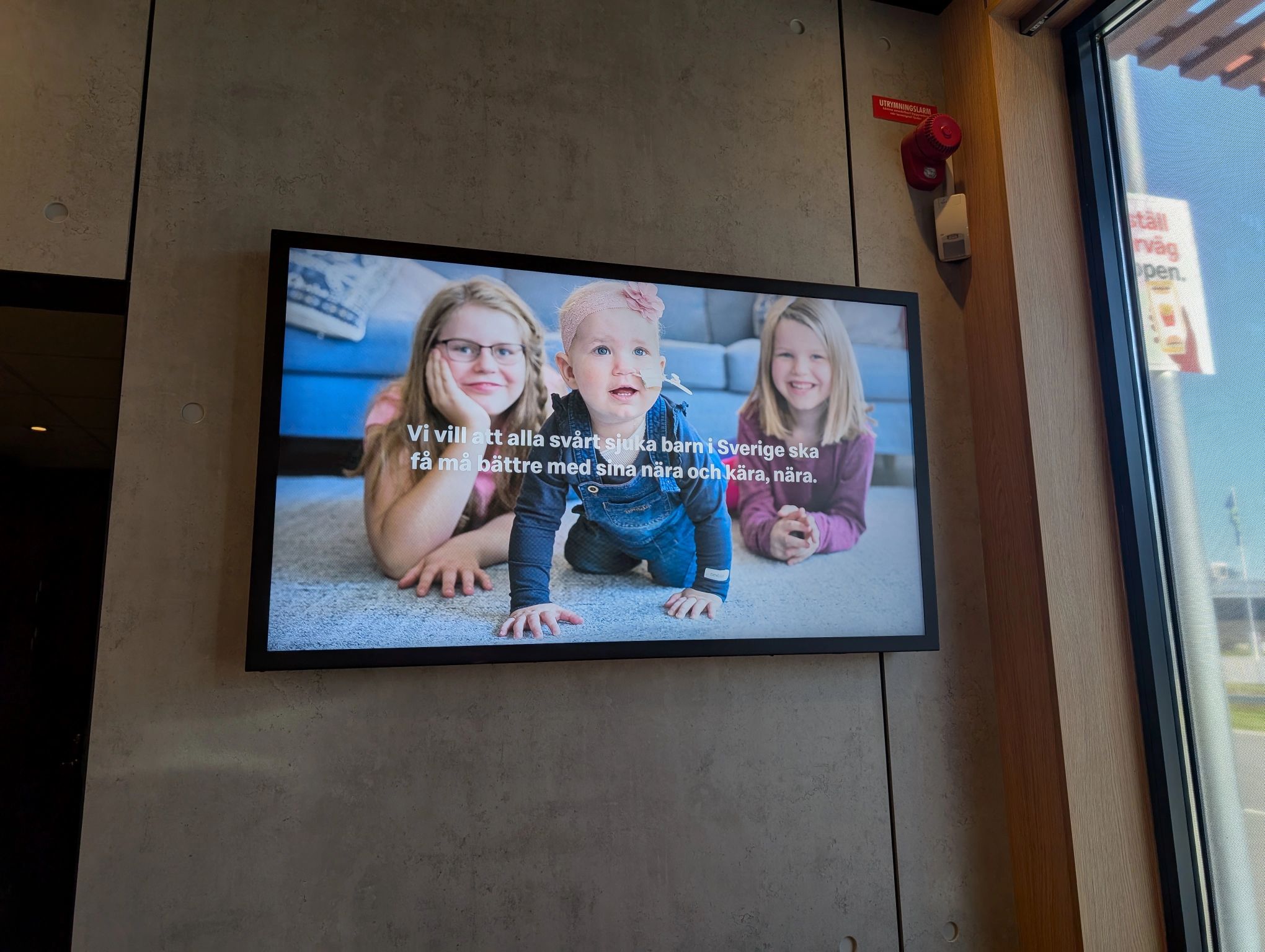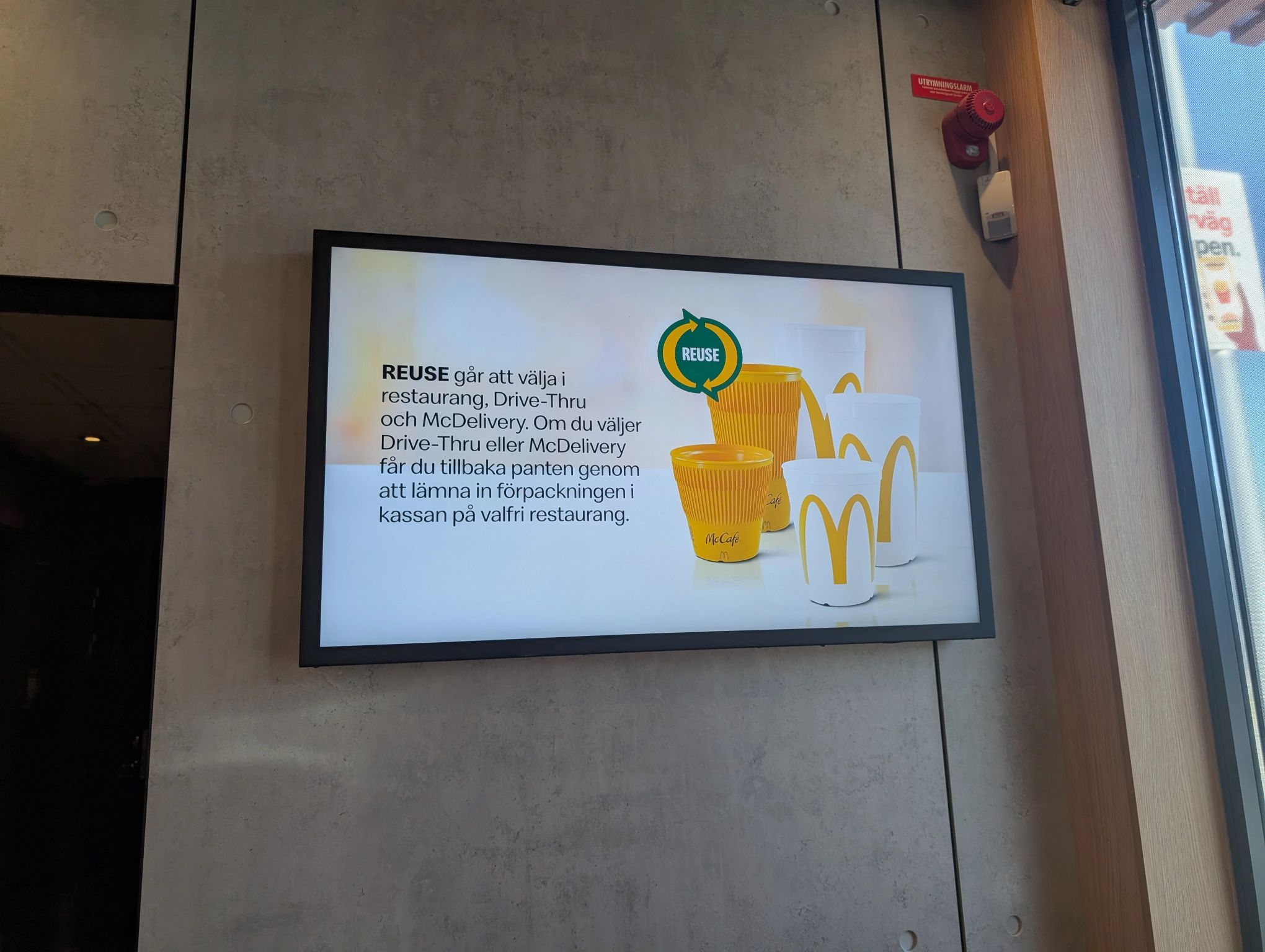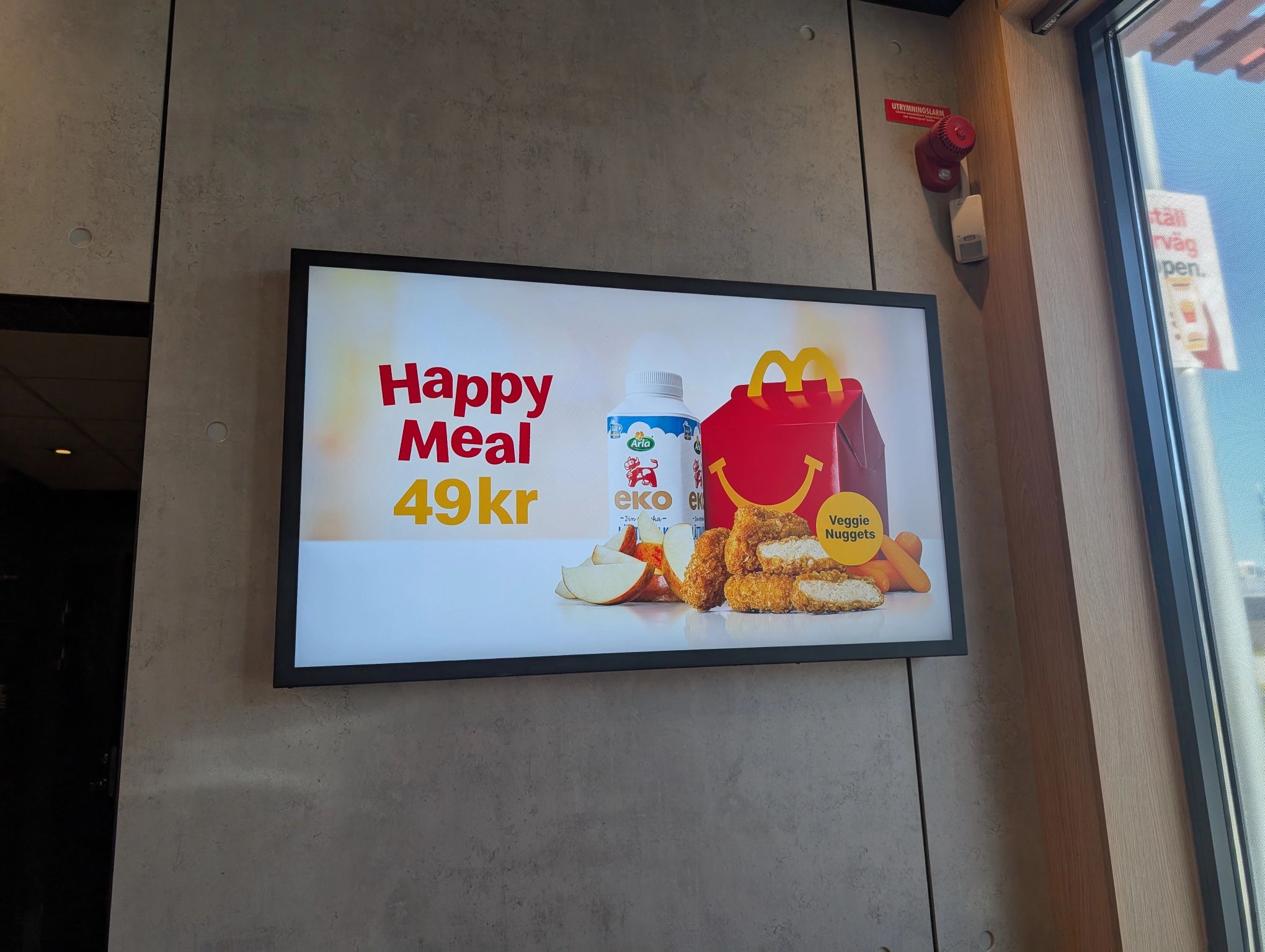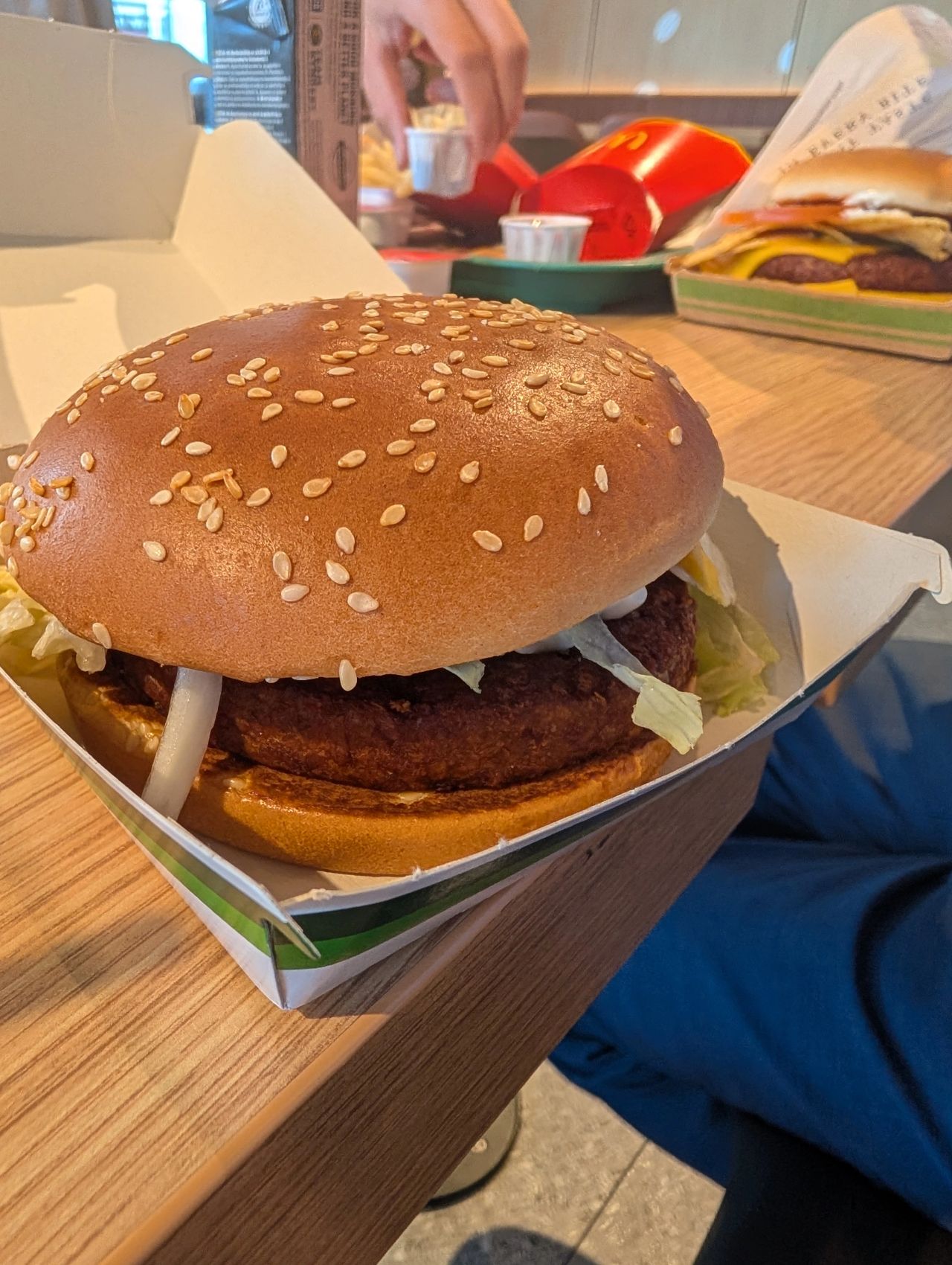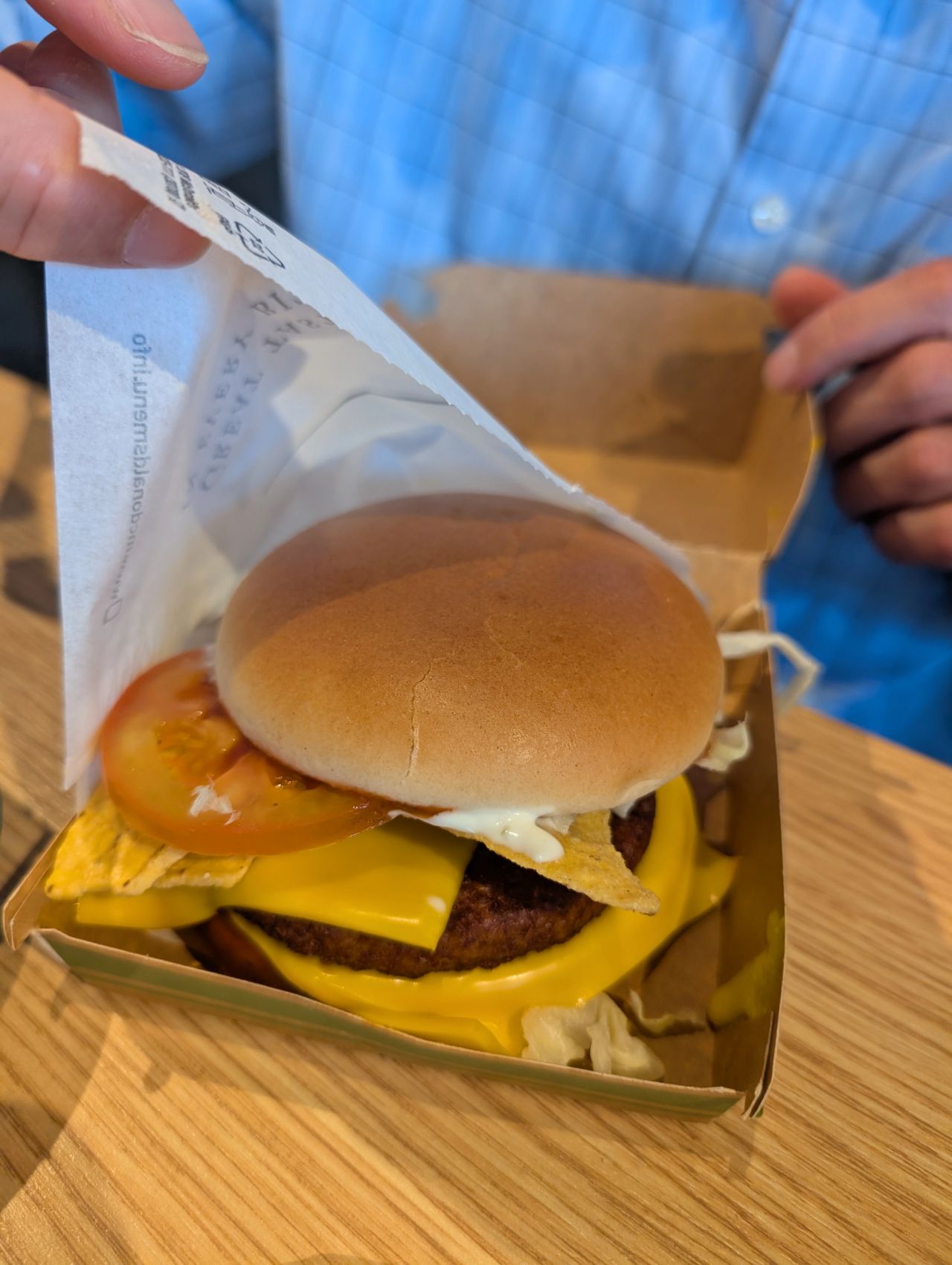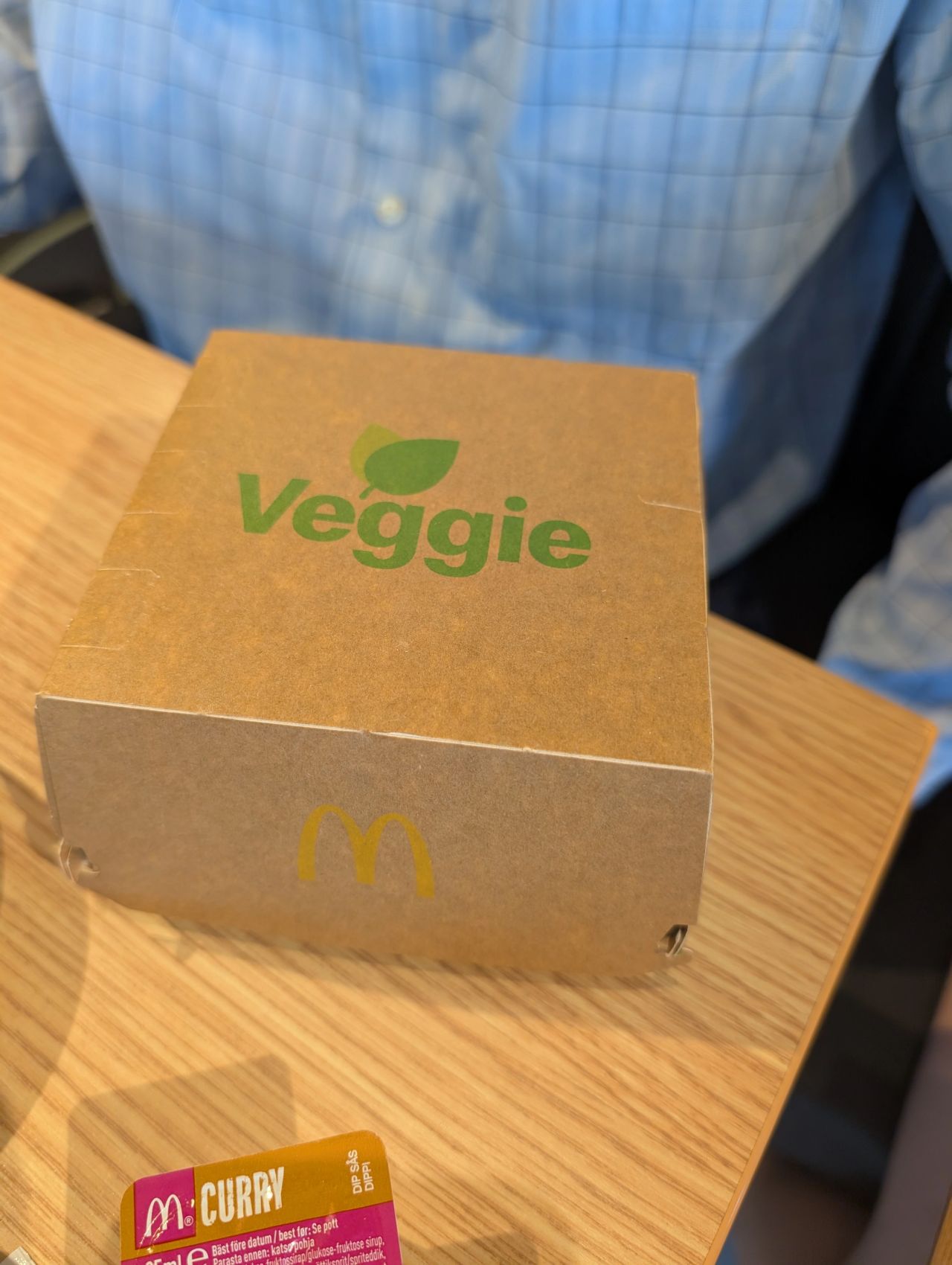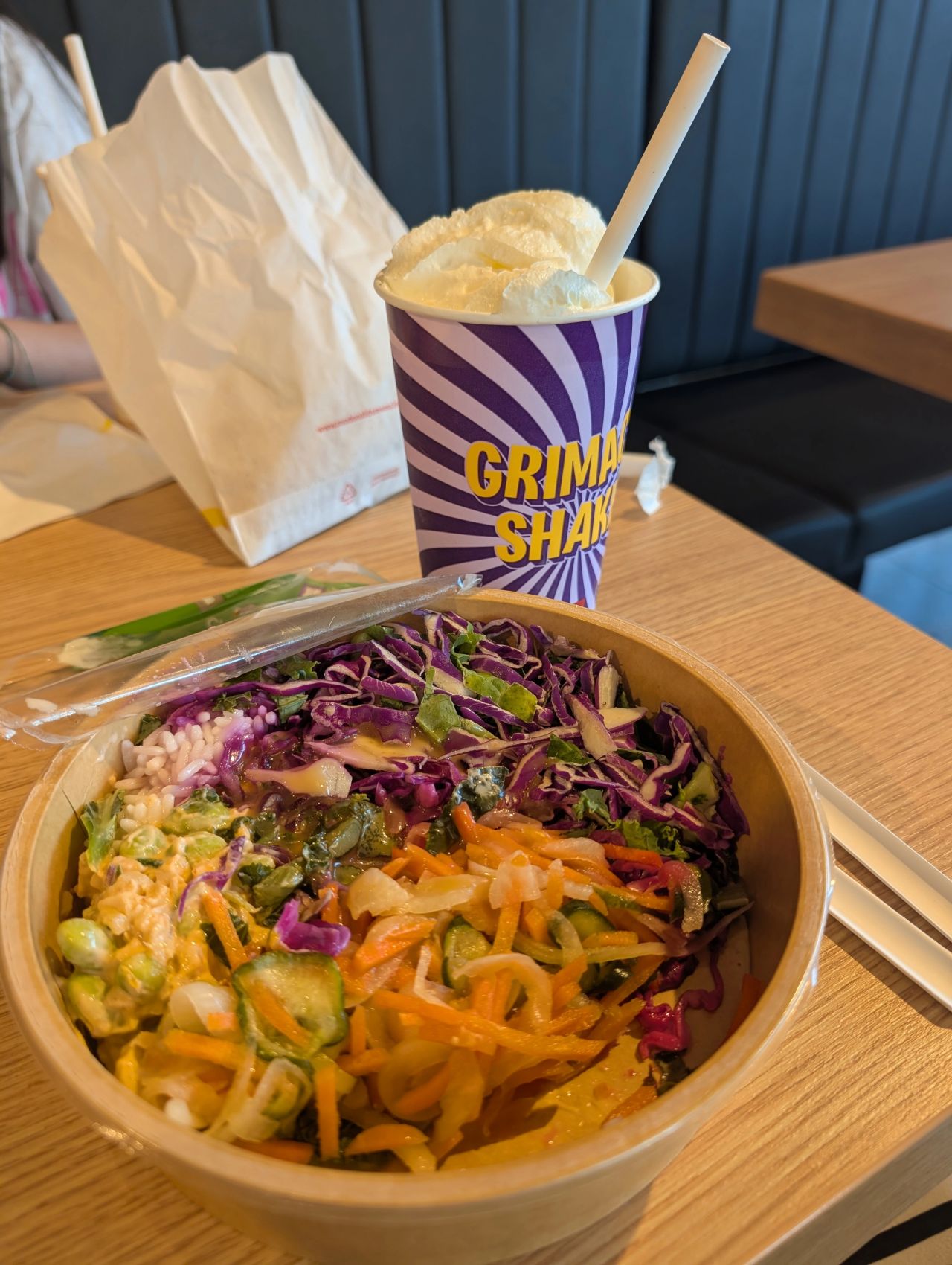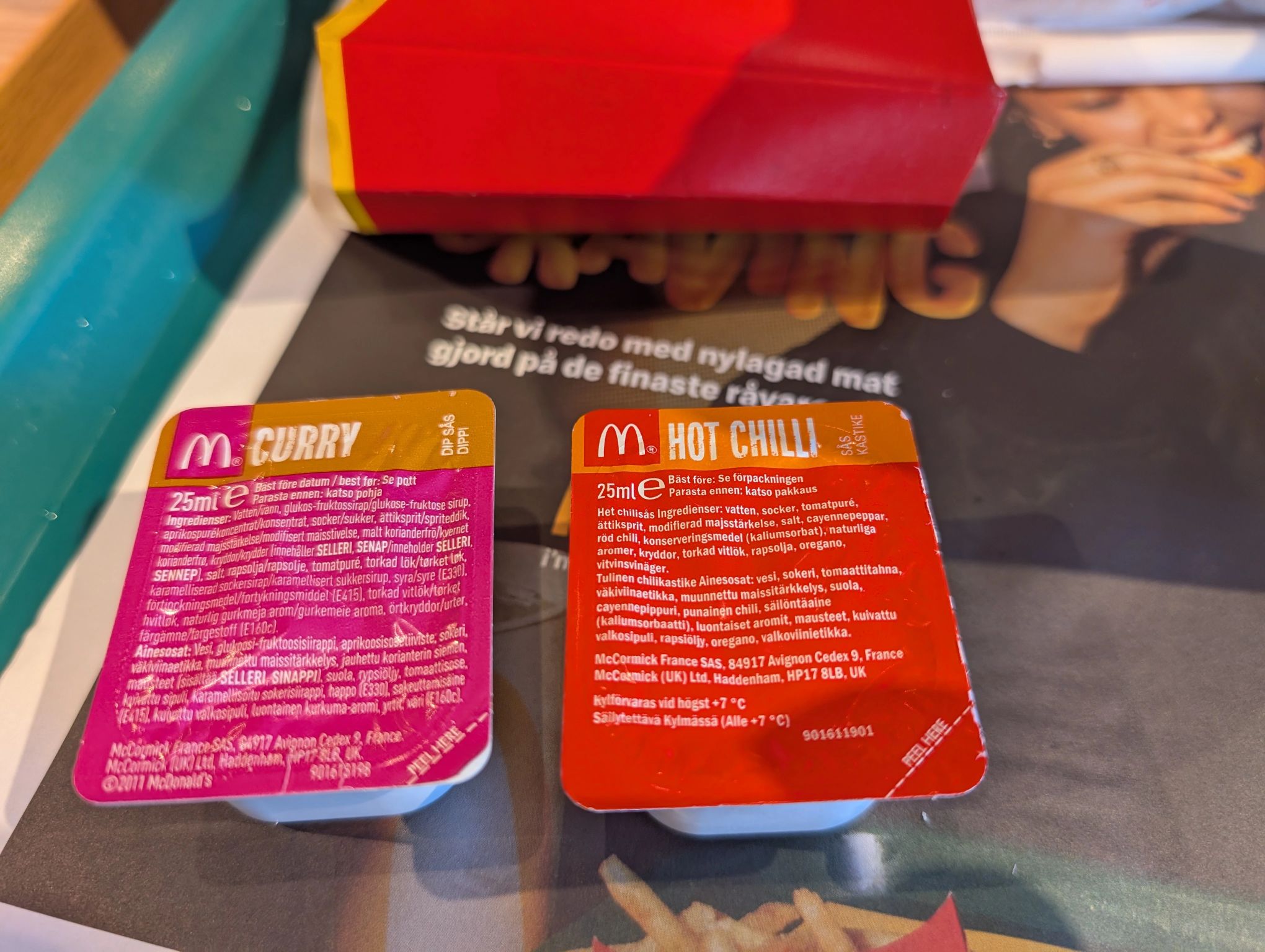By Iris Yim
What comes to mind when you hear the words fast food?
If you’re in the U.S., chances are the associations aren’t flattering. Over the years, I’ve heard everything from “Supersize Me” and “overly processed” to “not real ingredients,” “unhealthy,” and “guilty.” The term evokes convenience at the cost of health, sustainability, and even enjoyment.
But recently, while traveling in Sweden, I had an unexpectedly refreshing experience at a McDonald’s—and it left me wondering: Could the future of fast food actually be thoughtful, fun, and on-trend?
A Scandinavian Surprise
The McDonald’s we stopped at looked familiar at first glance, but the experience was anything but typical.
The menu featured a wide variety of items you’d never see at your neighborhood drive-thru: the McVegan burger, veggie McNuggets, wraps, salads, and a chicken Sriracha bowl. Not exactly the land of double cheeseburgers and endless fries. I even ordered a Grimace Shake just for fun—something not available in the U.S. but apparently born from an Internet meme that my daughter knew all about (of course).
My husband tried the chili and curry sauces—unexpected and surprisingly good. And my daughter? She had fun shaking her fries, which came with seasoning you mix yourself in a bag—a small but playful twist that made the meal memorable.
Sustainability and Social Impact—On the Wall, Not Just the Website
What stood out even more was what was on the walls.
A large digital display featured a Happy Meal with veggie nuggets and an option to order drinks in reusable cups—simply pay a small deposit, and get it back when you return the cup at any McDonald’s location. Another screen showed how donations to the Ronald McDonald House Foundation help children with cancer. The restaurant wasn’t just about feeding people quickly—it was inviting customers to participate in something bigger.
This level of integration between food, values, and fun felt seamless—and very different from the transactional, often anonymous experience many Americans associate with fast food.
Why This Matters for U.S. Fast Food Chains
The contrast is worth paying attention to.
In the U.S., fast food is often positioned as the enemy of wellness, sustainability, and thoughtful consumption. But in Sweden, McDonald’s is rebranding fast food as conscious convenience—with an eye toward flexitarian diets, eco-conscious choices, and even digital engagement.
There’s a clear takeaway here: If McDonald’s can do this in Sweden—serve up food that feels fresh, playful, and purposeful—why can’t fast food chains in the U.S. follow suit?
Rethinking “Fast Food” for the Future
Maybe it’s time to retire our outdated definitions.
What if fast food didn’t have to mean bad food? What if it simply meant food that fits modern life—efficient, satisfying, affordable, and in tune with what today’s consumers care about?
After all, it turns out fast food can be supersized in values—not just portions.

